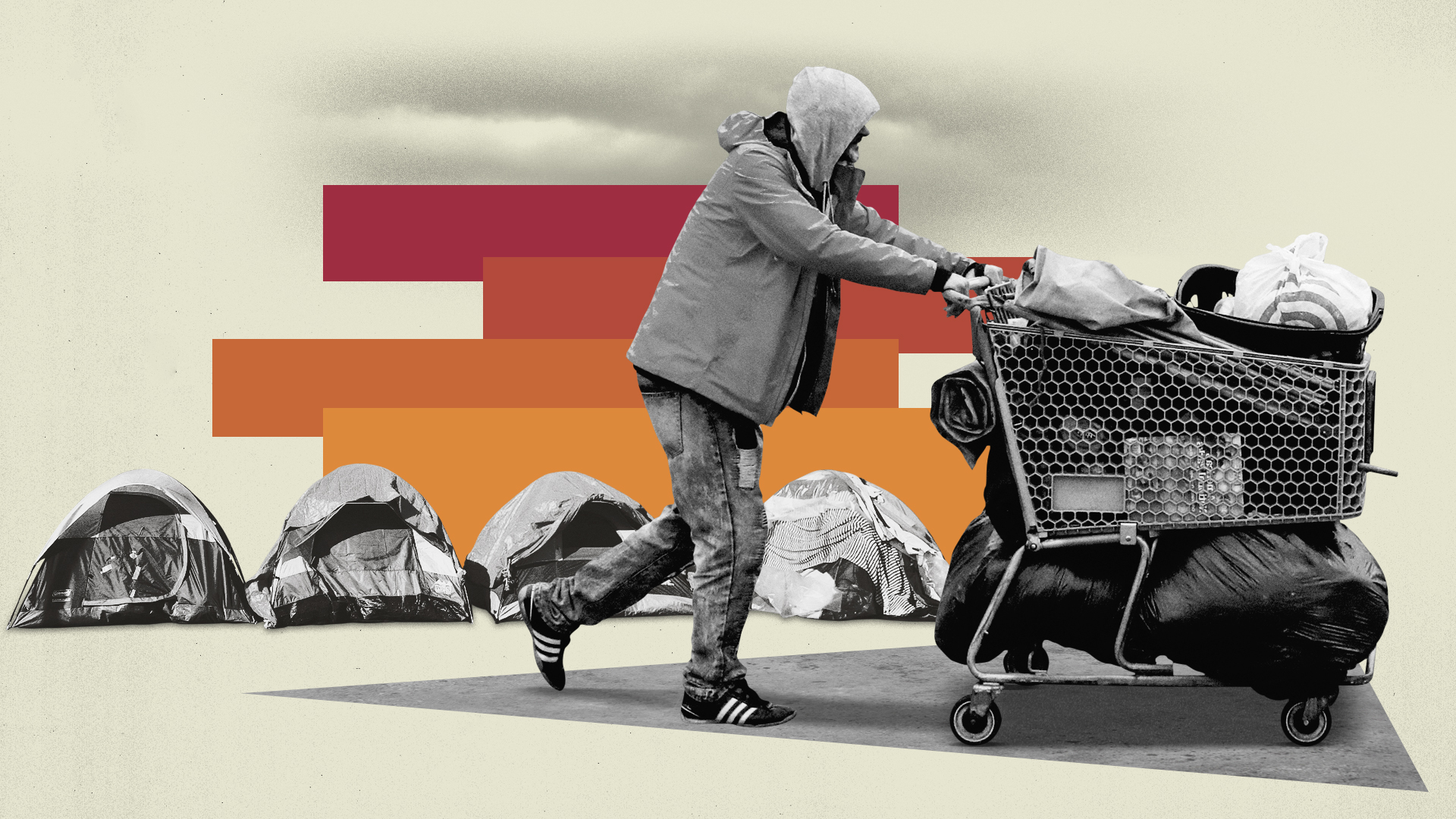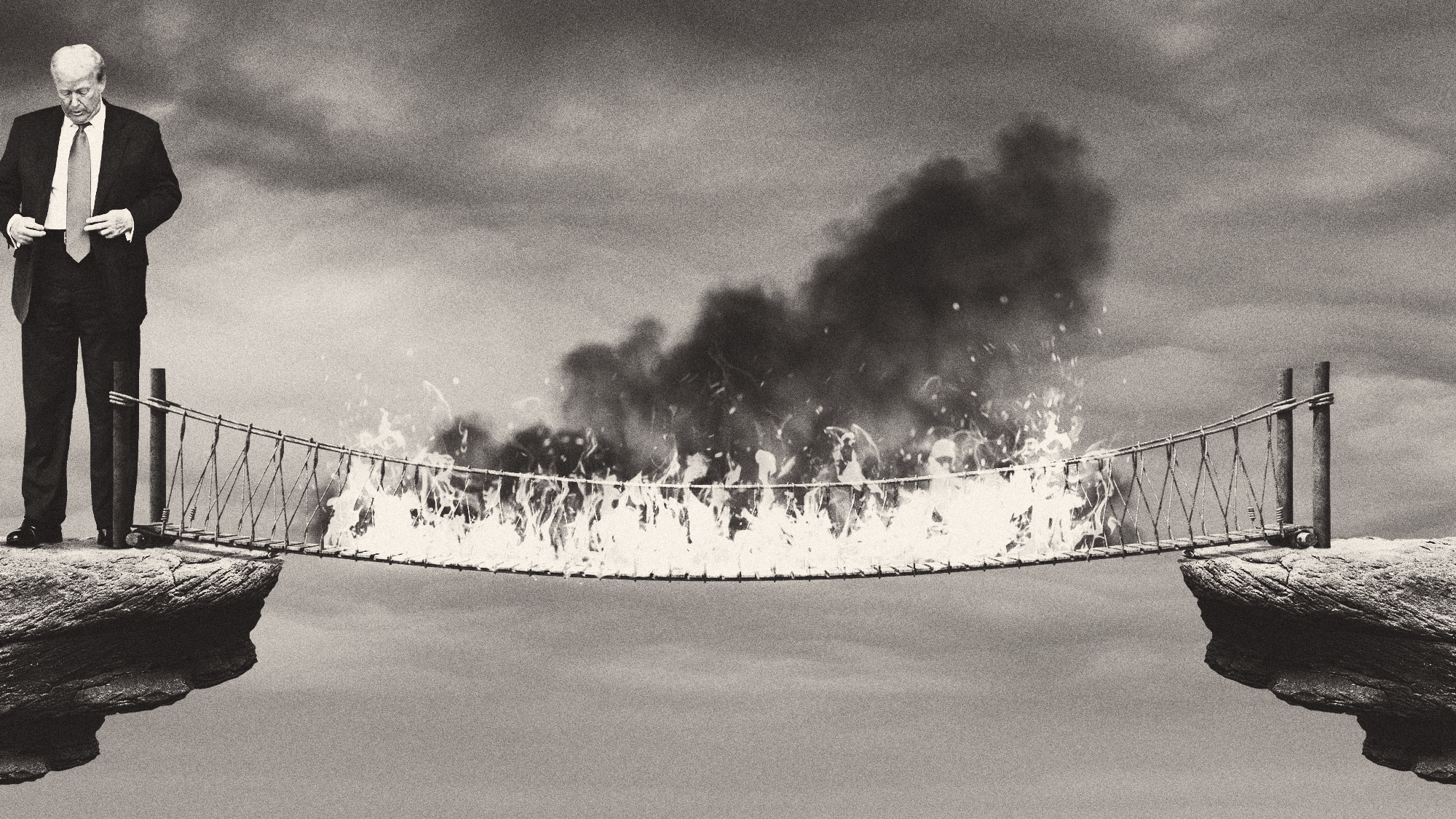Why are so many seniors homeless in America?
People over 60 are quickly becoming the largest share of America's unhoused population


The baby boomers are "the wealthiest generation" and currently the most powerful — three of the last five presidents were all born in the summer of 1946, after all. They also have the largest slice of the U.S. real estate wealth, 44%, even though they make up just 28% of the adult population, NPR's Planet Money reported. On the flip side, boomers are quickly becoming the largest share of America's homeless population.
People over 60 are "now arguably the fastest rising group" within the homeless population, Dennis Culhane, a professor of social policy at the University of Pennsylvania, told PBS NewsHour. He and colleagues predicted in a widely cited 2019 paper that the population of homeless seniors 65 and older in New York City, Los Angeles County and Boston will probably triple by 2030. And that was before the Covid-19 pandemic upended the lives of seniors living on the edge of poverty.
"It's in crisis proportions. It's in your face," Culhane told The Washington Post. "Average citizens can see people in wheelchairs, people in walkers, people with incontinence and colostomy bags making their living out of a tent."
The Week
Escape your echo chamber. Get the facts behind the news, plus analysis from multiple perspectives.

Sign up for The Week's Free Newsletters
From our morning news briefing to a weekly Good News Newsletter, get the best of The Week delivered directly to your inbox.
From our morning news briefing to a weekly Good News Newsletter, get the best of The Week delivered directly to your inbox.
Homeless boomers also face health problems and other challenges younger unhoused people don't have to deal with, and overwhelmed homeless shelters are having to adapt. Some have expanded medical services and others have created bunk bed–free spaces where wheelchair-bound seniors and others with mobility issues can sleep. Being homeless is really hard on the body, and that's a special problem for seniors, Dr. Margot Kushel, an expert on homeless elderly people and professor at U.C. San Francisco, told AARP. Why are so many baby boomers living on the streets?
What the commentators are saying
America's 72.5 million boomers, born between 1946 and 1964, may be well-off overall, but the early and late-stage boomers faced very different economies. "While the first half of the boom generation entered adulthood riding the winds of economic prosperity," The New York Times Magazine explained, those born between 1955 and 1964 "struggled against housing and labor markets crowded by their generational predecessors."
These late boomers came of age during the recessions of the late 1970s and early 1980s, and some never recovered, Culhane told PBS. "It's this large group of people whose lives have been essentially thrown off track by the economy of the '80s," Culhane said. "And there's strong research that shows that if you don't get into the labor market in your 20s, the odds that you will are very significantly diminished."
By 1990, these "chronically homeless" late boomers were 30 — "today their average age is 62," AARP noted. Some of the growth in the older homeless population "might just be that everybody who was on the streets when they were 40 or 50 is still on the streets," Peter Gathie, the cofounder of Manna House in Memphis, told PBS.
A free daily email with the biggest news stories of the day – and the best features from TheWeek.com
High inflation, a shrinking supply of affordable housing, and an end to pandemic-era eviction moratoriums have pushed a new group of younger boomers out of homes and apartments for the first time, at an age where they are too old to be readily employable and too young for Social Security. "We hear the same story over and over again. 'I've lived in this place 10, 15 years. And now I have to move because they've increased the rent above what I even earn for a given month,'" Teresa Smith, founder of Dreams for Change in San Diego, told CBS News.
"This is a Reagan-era problem, but we haven't fixed it since," Eric Tars, legal director at the National Homelessness Law Center, told PBS. President Ronald Reagan and the Congress at the time may have "cut the affordable housing budget by more than half," he added, "but then every subsequent Congress never made up that gap. And it hasn't been made up at the state or local level."
What's next?
The growing number of people living in tents and shelters or out of their cars is so significant that right before Christmas 2022, "President Biden released a federal strategic plan to reduce homelessness by 25% by 2025," focusing on those most affected, including veterans and disabled and older adults, AARP reported. The plan is meant to "address a lack of affordable housing, help people in crisis and prevent people from losing their homes in the first place."
State and local governments and charitable organizations are trying to get people in homes as well. Salt Lake City and a local nonprofit, borrowing an idea from Austin, broke ground in March on a community of affordable tiny homes to house the homeless. The community, The Other Side Village, will initially have 54 tiny homes set aside formerly unhoused residents plus 25 Airbnb-style rentals to help finance the project. It can scale up to 430 tiny homes.
While probably not a long-term solution to the "causal drivers" of homelessness, the village can show homeless people "we have a model that can actually help them get in sustained housing and become members of the community, rather than being isolated," project spokesman Samuel Grenny told NPR.
Los Angeles and other high-rent cities on the West Coast have had surprising success by easing regulations on backyard accessory dwelling units (ADUs), or "granny flats," the Post reported. ADUs "tend to rent at relatively low prices, and they can be dropped into neighborhoods that are already densely populated but that are desirable because of their proximity to jobs, public transportation, schools or other amenities," the Post noted. "Owners can use them for extra rental income, or to house friends, family or even their own grandmothers — harking back to the original 'granny flat' moniker."
That won't solve boomer homelessness entirely, but at least it might fix a supply problem that the boomers themselves created, Brookings Institution economist Jenny Schuetz told NPR's Planet Money. "We literally can't add more homes to a neighborhood because the older residents who live there won't let us build" duplexes, condos, apartments — "anything other than a single-family, detached house on the majority of land."
Ultimately, to solve homelessness, especially among seniors, "we just need more housing for these people," Boston University social welfare policy professor Thomas Byrne told The Boston Globe.
Peter has worked as a news and culture writer and editor at The Week since the site's launch in 2008. He covers politics, world affairs, religion and cultural currents. His journalism career began as a copy editor at a financial newswire and has included editorial positions at The New York Times Magazine, Facts on File, and Oregon State University.
-
 Moscow cheers Trump’s new ‘America First’ strategy
Moscow cheers Trump’s new ‘America First’ strategyspeed read The president’s national security strategy seeks ‘strategic stability’ with Russia
-
 Political cartoons for December 8
Political cartoons for December 8Cartoons Monday's political cartoons include ICE in the Big Easy, Warner on the wane, and a Putin peace deal
-
 Did Trump just end the US-Europe alliance?
Did Trump just end the US-Europe alliance?Today's Big Question New US national security policy drops ‘grenade’ on Europe and should serve as ‘the mother of all wake-up calls’

